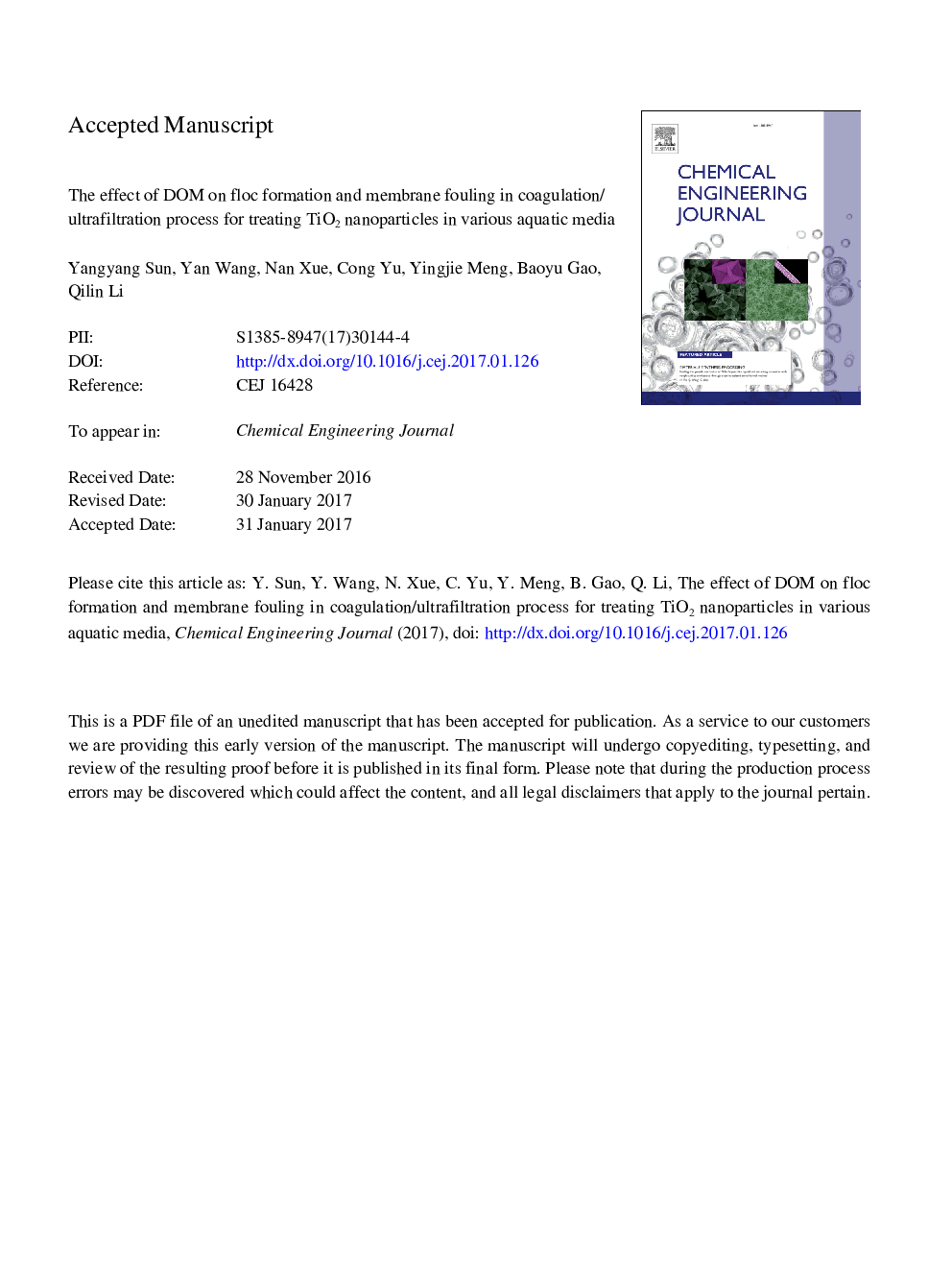| Article ID | Journal | Published Year | Pages | File Type |
|---|---|---|---|---|
| 4763333 | Chemical Engineering Journal | 2017 | 33 Pages |
Abstract
Dissolved organic matter (DOM) would absorb on nanoparticle (NP) surface and affect their fate, transport, bioavailability, toxicity and control. The study explored the removal of TiO2 NPs as a function of DOM composition in coagulation/ultrafiltration membrane (UF) process by comparing the flocs properties and membrane fouling in different water samples (e.g. HA synthetic water (WATERSN), surface water (WATERXQ) and municipal wastewater (WATERMW). The results showed that floc size of WATERSN increased with higher dosage and lower pH conditions. In contrast, the floc size of WATERMW decreased with increasing dosages while the floc size of WATERXQ was not affected by Polyaluminum Chloride (PAC) dosage and pH. TiO2 NPs in WATERMW and WATERXQ aggregated to larger and looser flocs than those in WATERSN, probably due to the higher protein and larger molecules DOM fractions in WATERMW and WATERXQ. The floc properties in different water samples affected fouling behavior in ultrafiltration membrane following pre-coagulation. PAC (2 mg Lâ1) could reduce 67% of external fouling resistance for WATERSN but only 20% for WATERMW. In addition, lower restricting internal fouling for WATERMW and WATERXQ was achieved by a pre-coagulation process.
Keywords
Related Topics
Physical Sciences and Engineering
Chemical Engineering
Chemical Engineering (General)
Authors
Yangyang Sun, Yan Wang, Nan Xue, Cong Yu, Yingjie Meng, Baoyu Gao, Qilin Li,
